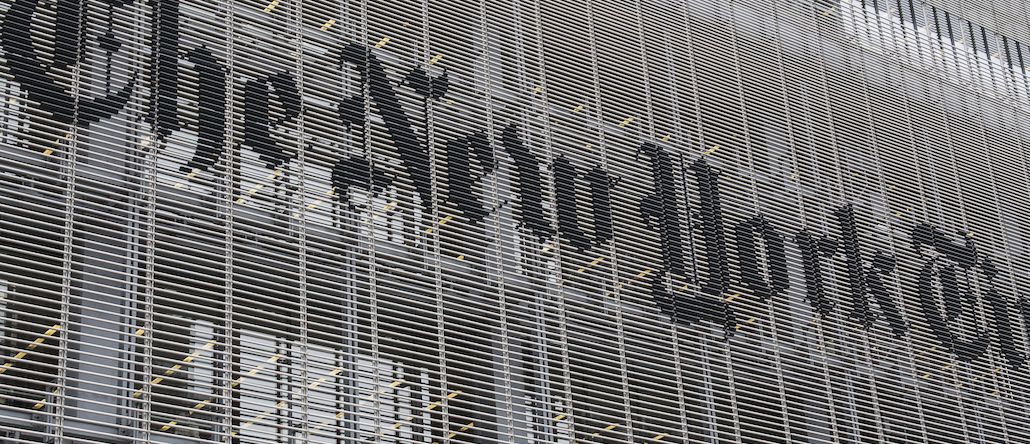Sign of the Times: The New York Times is buying an experiential agency

For the second time this year, The New York Times is acquiring a marketing agency. This time, it’s buying Fake Love, an agency that specializes in live experiences, virtual and augmented reality.
The Times is trying to grow its revenue in part by offering more ad agency services, as it did by adding influencer marketing agency HelloSociety in March and now, Fake Love. Buying an existing agency was a faster way to build up those offerings than developing them from the ground up. The Times’ native ad unit, T Brand Studio, has worked with Fake Love before, so the publisher was already familiar with it. For one of the projects, the Times used Fake Love to create a VR video ad to promote the Weinstein Company movie “Carol: Dearest…”
“We’re really interested in playing a bigger role in the marketing services value chain — coming up with an idea, creating it, distributing the idea, measuring it,” said Sebastian Tomich, senior vp of advertising and innovation at the Times.
Financial terms of the deal, set to be announced today, were not disclosed. According to its LinkedIn profile, Fake Love has fewer than 50 employees.
Native advertising can be lucrative, but it’s hard to do well and with predictability, which has led publishers to look for other services to sell marketers. Tomich said Fake Love will help the Times meet new kinds of requests it’s fielding from advertisers itself rather than farming them out to external agencies.
“Thanks to Pokemon Go, I’m getting daily requests for [augmented reality],” he said. “I’m getting lot of requests for chatbots. And VR, the market is already hot. We’ve had a client once a week getting pretty serious about doing a project with us. We want to be able to bring that in house.”
Another part of the reason for buying an agency is so the Times can serve advertisers who are in the market for creative work but don’t necessarily want to buy media from the Times. That’s why, like HelloSociety, Brooklyn-based Fake Love will keep its own branding and maintain its operation separate from the rest of the Times.
“A big hurdle you have to overcome is, it takes a meeting or two to show we’re not pitching the New York Times audience, we’re pitching the creative,” Tomich said. “It’s really important that we have two different lines of business development so the lines remain distinct. If we’re affiliated with a publishing brand, you have to overcome that that we’re not there to pitch media.”
More in Media

Meta AI rolls out several enhancements across apps and websites with its newest Llama 3
Meta AI, which first debuted in September, also got a number of updates including ways to search for real-time information through integrations with Google and Bing.

Walmart rolls out a self-serve, supplier-driven insights connector
The retail giant paired its insights unit Luminate with Walmart Connect to help suppliers optimize for customer consumption, just in time for the holidays, explained the company’s CRO Seth Dallaire.

Research Briefing: BuzzFeed pivots business to AI media and tech as publishers increase use of AI
In this week’s Digiday+ Research Briefing, we examine BuzzFeed’s plans to pivot the business to an AI-driven tech and media company, how marketers’ use of X and ad spending has dropped dramatically, and how agency executives are fed up with Meta’s ad platform bugs and overcharges, as seen in recent data from Digiday+ Research.





